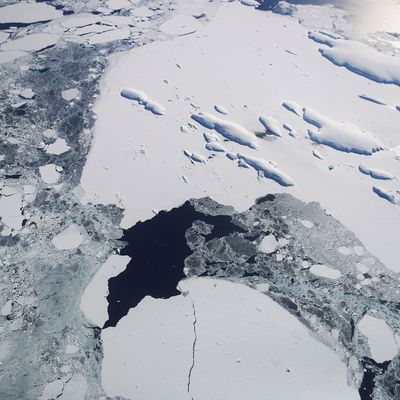
Antarctica is melting faster than anyone thought, scientists said in an alarming new study published Wednesday, and the subsequent rise in sea levels could wreak havoc on coastal communities over the next several decades.
From 2012 to 2017, the melting Antarctic ice sheet has dumped 241 billion tons of water into the ocean, the study says. That’s up from 84 billion tons ten years ago, and 54 billion tons ten years before that. In the 25 years between 1992 and 2017, the ice sheet lost around 3 trillion tons of ice, with 40 percent of that loss coming in the last five years alone.
The 80 scientists who put together the report, published in Nature, compiled their results by measuring ice loss in 24 different ways that relied on satellites, computer simulations, and measurements taken on the ground. They say that by 2100, Antarctica’s melting ice alone could contribute to the rise of sea levels by six inches, or 15 centimeters. “Around Brooklyn you get flooding once a year or so, but if you raise sea level by 15 centimeters then that’s going to happen 20 times a year,” said University of Leeds professor Andrew Shepherd, the study’s lead author.
Researchers found that the ice losses are largely driven by melting of the West Antarctic ice sheet, which is hit hard by warm oceans that melt ice from below. The Antarctic Peninsula is also shedding ice, though at a less rapid clip, while East Antarctica has remained fairly steady.
The ice sheets of Antarctica are home to as much as 90 percent of the world’s freshwater supply. If it all melted, sea levels would rise by nearly 200 feet. While that’s not anywhere close to happening, Shepherd called the rate at which ice is currently melting
“surprising.”
“This has to be a cause for concern for the governments we trust to protect our coastal cities and communities,” he said.





























